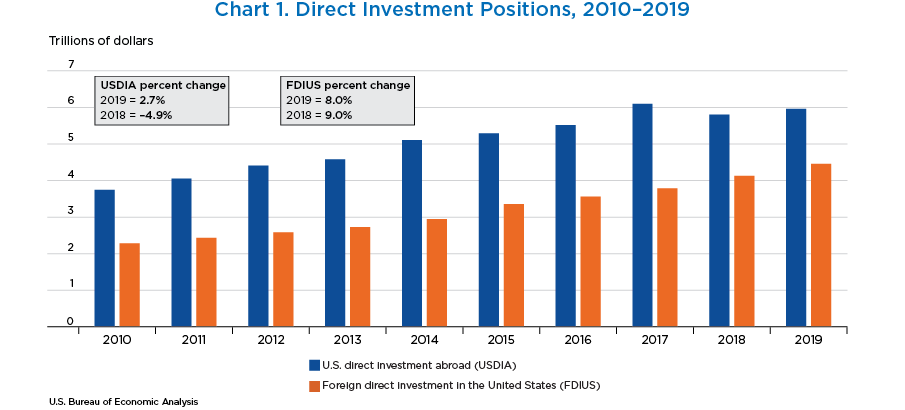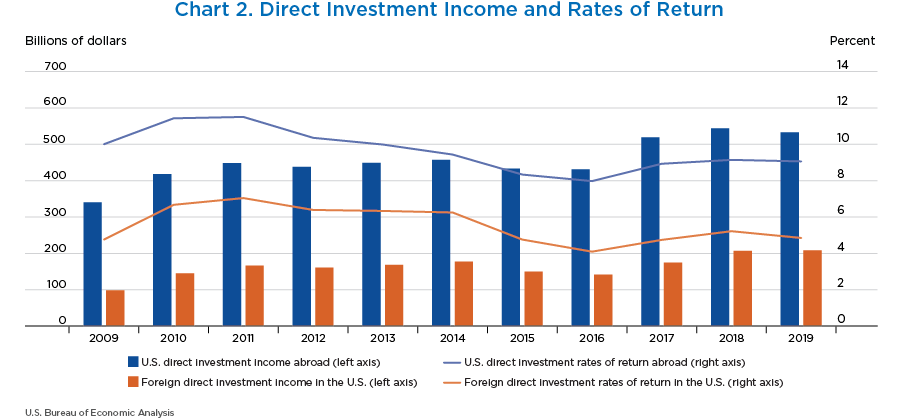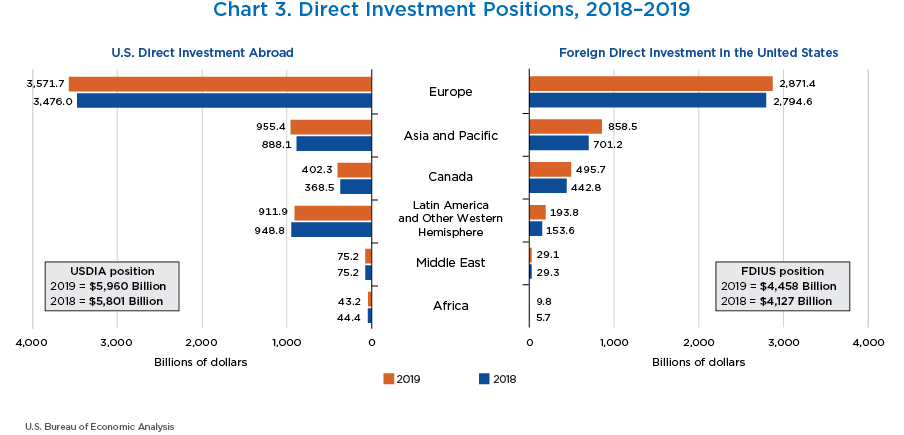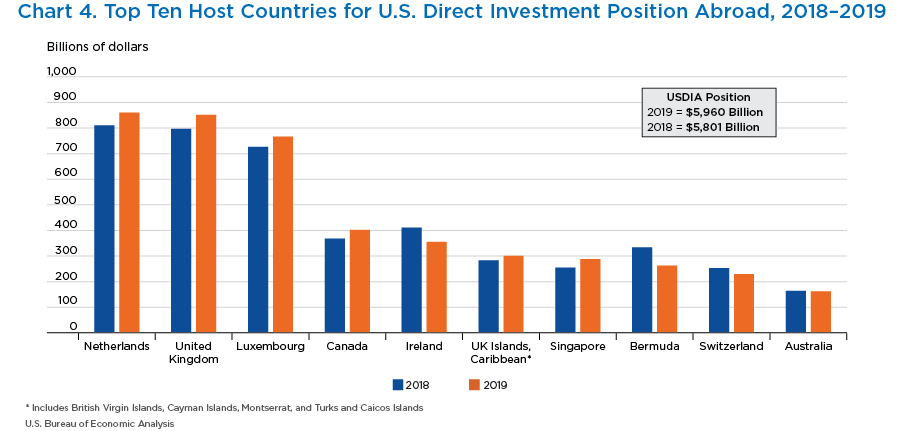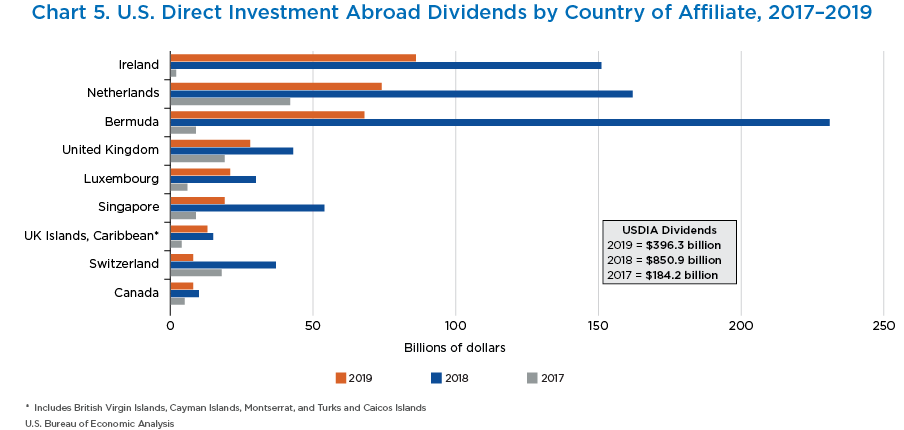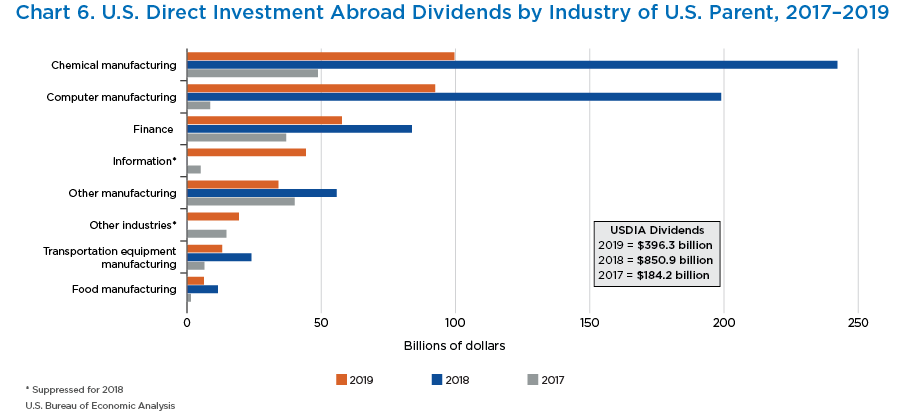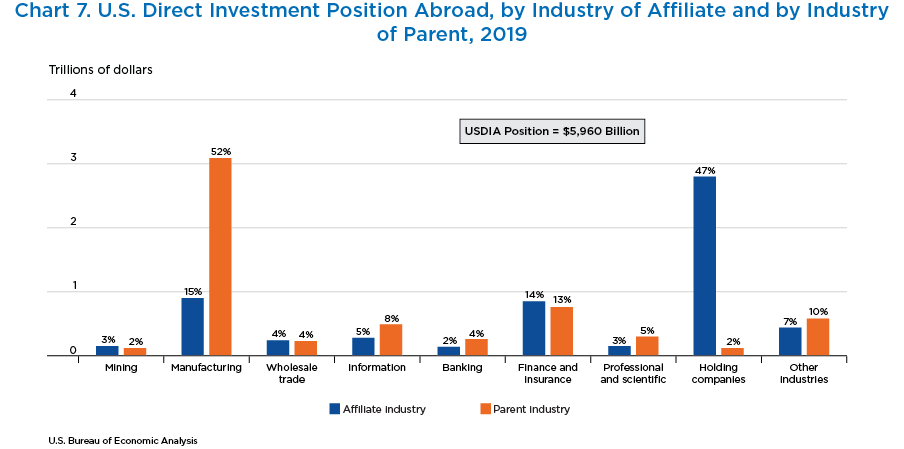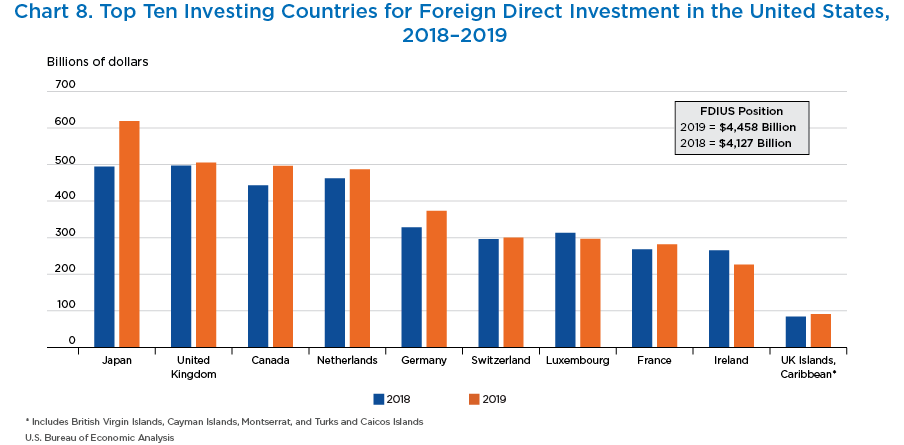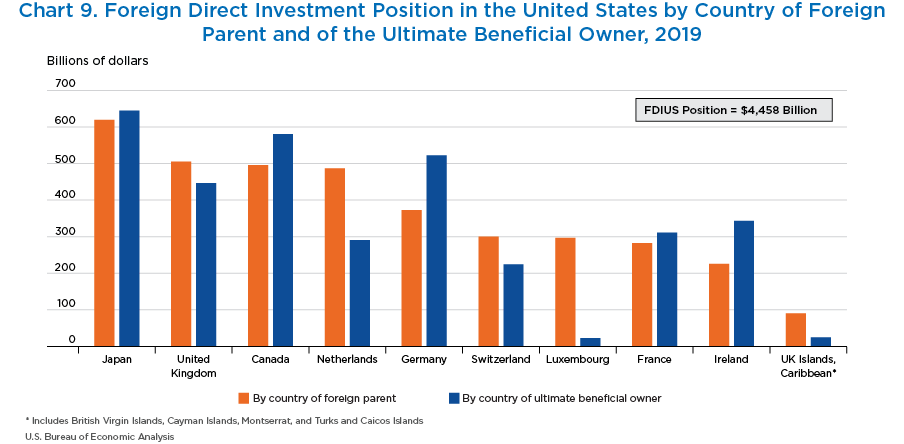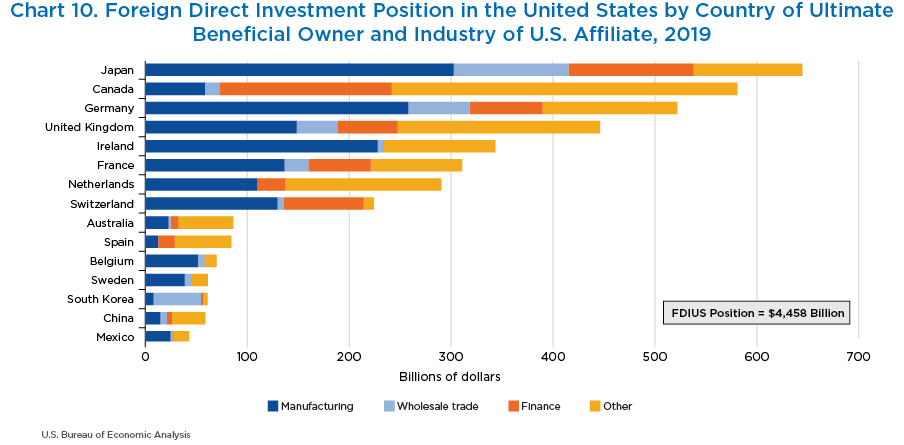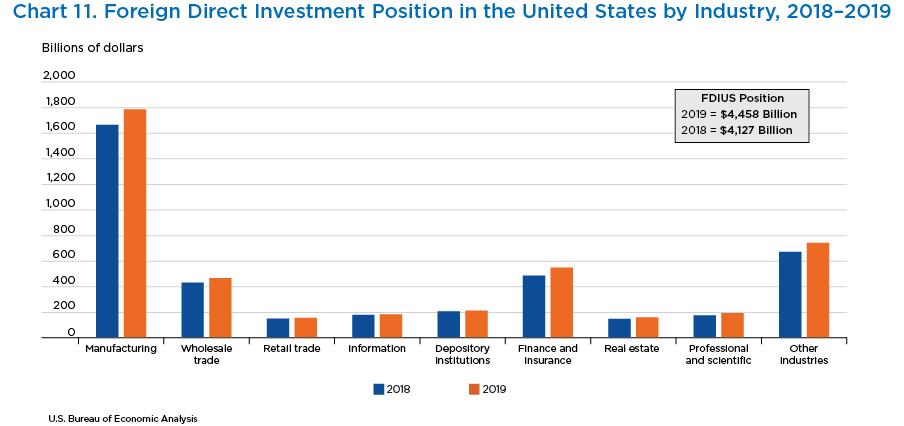Direct Investment by Country and Industry for 2019
The Bureau of Economic Analysis (BEA) recently released statistics on direct investment by country and industry for 2019. These statistics cover both U.S. direct investment abroad (USDIA, or outward investment) and foreign direct investment in the United States (FDIUS, or inward investment). The statistics cover positions (or cumulative stock of investment), financial transactions, and income, as well as their components, and are obtained from mandatory surveys of direct investment conducted by BEA.
The following charts present highlights of BEA’s direct investment by country and industry statistics for 2019. Much more detail, including additional data items, can be found on the BEA website.
- The U.S. direct investment abroad position increased $158.6 billion, or 2.7 percent, to $5.96 trillion at the end of 2019, reversing the decrease seen in 2018 when there were record repatriation of previously earned foreign profits as a result of the Tax Cuts and Jobs Act (TCJA). (See BEA’s FAQ on the topic.)
- The foreign direct investment position in the United States increased $331.2 billion, or 8.0 percent, to $4.46 trillion at the end of 2019 from $4.13 trillion at the end of 2018.
- In 2019, U.S. multinational enterprises (MNEs) earned $532.7 billion on their investments abroad, a 2 percent decrease from $544.0 billion earned in 2018.
- Foreign MNEs earned $208.1 billion on their U.S. investments in 2019, up slightly from $206.5 billion earned in 2018.
- The rate of return for outward investment was 9 percent in 2019, while the inward rate of return was 5 percent. Both rates of return were slightly below their 10-year averages in 2019
- Europe was the largest source and destination of U.S. direct investment, accounting for 60 percent of U.S. direct investment position abroad and 64 percent of foreign direct investment position in the United States.
- Foreign direct investment in the United States increased from every region, with the largest increase from the Asia and Pacific region.
- The value of U.S. direct investment in Europe, Asia and Pacific, and Canada increased in 2019. Investment in Latin America and Other Western Hemisphere and Africa decreased, while investment in the Middle East remained unchanged.
- The top 10 host countries accounted for 75 percent of the stock of U.S. direct investment abroad in 2019.
- The U.S. direct investment position abroad remained the largest in the Netherlands at $860.5 billion, followed by the United Kingdom ($851.4 billion) and Luxembourg ($766.1 billion).
- Canada ($402.3 billion) moved up one position from 2018 to be the fourth largest host economy, moving Ireland ($354.9 billion) into fifth.
- The TCJA generally eliminated taxes on dividends, or repatriated earnings, to U.S. multinationals from their foreign affiliates beginning in 2018.
- In 2019, U.S. multinationals repatriated $396.3 billion from their affiliates abroad. This is a decrease of $454.6 billion from the record repatriations in 2018 of $850.9 billion but still more than twice the average annual dividends from the 10 years prior to the TCJA.
- By country, more than half of the dividends in 2019 were repatriated from affiliates in three countries: Ireland ($85.8 billion), the Netherlands ($74.3 billion), and Bermuda ($67.9 billion).
- By industry, U.S. multinationals in chemical manufacturing ($99.6 billion) and computers and electronic products manufacturing ($92.5 billion) repatriated nearly half of all dividends in 2019.
- U.S. parent companies invest in a variety of industries, but nearly half of the overall U.S. direct investment position abroad is in holding companies. These companies own other foreign affiliates that operate in a variety of industries.
- By industry of the U.S. parent, investment by manufacturing multinationals accounted for 51.9 percent of the position, followed by MNEs in finance and insurance (12.8 percent).
- The top five investing countries accounted for more than half of the foreign direct investment position in the United States. The top 10 investing countries accounted for 84 percent.
- Japan moved up one position from 2018 to be the top investing country in 2019, with a position of $619.3 billion, moving the United Kingdom to second, with $505.1 billion.
- Canada and the Netherlands switched places as the third and fourth largest investing countries, with $495.7 billion and $487.1 billion, respectively.
- Multinational enterprises can have complex ownership structures. To provide a more complete picture of these structures, BEA produces two sets of statistics on the ownership of foreign direct investment in the United States. The first, by country of foreign parent, focuses on the country of the immediate investor. The second, by country of the ultimate beneficial owner (UBO), shows where the ultimate owner of the U.S. affiliate is located.
- Multinationals from Japan tend to own their U.S. affiliates directly, and the Japanese position by country of foreign parent, $619.3 billion, and by country of UBO, $644.7 billion, are close.
- Investments by German multinationals tend to pass through other entities in the ownership chain before entering the United States. The German position by country of foreign parent, $372.9 billion, is less than by country of UBO, $522.0 billion.
- Entities in some countries, including Luxembourg and the Netherlands, act as pass-through entities for multinationals based in other countries. The Luxembourg position by country of foreign parent, $297.1 billion, is much greater than the position by country of UBO, $22.8 billion.
- By country of UBO, the top 10 countries account for 80 percent of the foreign direct investment position in the United States. Japan had the largest position, with $644.7 billion in 2019, followed by Canada ($580.8 billion) and Germany ($522.0 billion).
- Japanese and German multinationals primarily invest in the U.S. manufacturing sector, with manufacturing affiliates accounting for 46.9 percent and 49.4 percent of their investments, respectively.
- In 2019, 40.1 percent of the foreign direct investment position in the United States, or nearly $1.8 trillion, was invested in the U.S. manufacturing industry.
- Finance and insurance was the second largest industry, with 12.3 percent, or $549.7 billion, and wholesale trade was third at with 10.5 percent, or $467.2 billion.
- Within manufacturing, the largest share of foreign direct investment was in chemicals, accounting for 43.4 percent of the total investment in the sector.
- Pharmaceutical manufacturing comprises two-thirds of the foreign direct investment position in chemical manufacturing.
